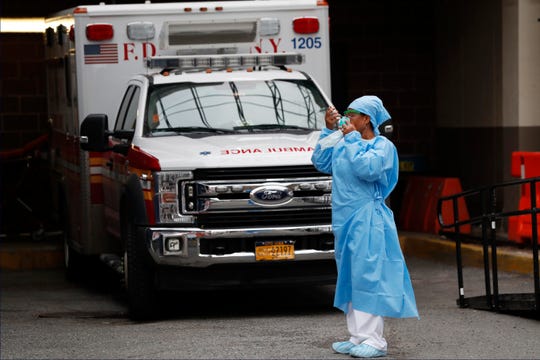Imagine you are at home, and start to feel weak. You experience symptoms that may include intermittent numbness on one side of your body, double vision, dizziness, severe headache and speech changes.
In a normal time, your first instinct may have been to call 911 and get to a hospital ASAP. But in the era of COVID-19, even as restrictions begin to be lifted, our thought process has started to change regarding emergency care, to our own detriment. Studies show that during this pandemic, stroke victims have been avoiding emergency care more often, costing precious time in the battle to limit long-term health impacts.
With all the news we hear daily about the deadly impact of COVID-19 and the importance of staying home as much as possible to limit its spread, it’s understandable that some people will worry about going to a hospital.
But in reviewing the statistics, it becomes clear there is no reason to avoid an emergency room visit if you have symptoms of severe conditions like stroke:
► Studies show the overall morbidity rate for COVID is roughly 1.3%.
► The overall morbidity rate for stroke victims is much higher, approximately 17%. Almost 800,000 Americans have a stroke each year; 140,000 of them do not survive.
► Strokes account for 5% of all U.S. deaths, and someone has a stroke every 40 seconds.
What are stroke symptoms? The pneumonic often taught to medical students about the signs of stroke is called “FAST”, which stands for: Facial drooping, Arm weakness, Speech disturbance, Time. Not only is FAST a reminder of the common symptoms but it also emphasizes the importance of timely treatment. In fact, in a study by the Cleveland Clinic it was found that favorable long-term outcomes were present in nearly double the patients who underwent stroke treatment within an hour compared with patients who received treatment after the one-hour timepoints. This data is particularly relevant this month, as May is National Stroke Awareness month.
In dealing with stroke, ‘time lost is brain function lost,” so any time spent considering the pros and cons of visiting the ER due to concerns about the pandemic causes more damage by the minute. Don’t second-guess yourself.
An emergency room nurse dons her face protectors after taking a break Sunday in a driveway for ambulances and emergency medical services vehicles outside Brooklyn Hospital Center’s emergency room. (Photo: Kathy Willens, Associated Press)
Also, stories are emerging of stroke-related situations that could have been handled differently by the medical community during the COVID-19 outbreak.
In a recent call shift, I encountered a patient who presented with stroke-like symptoms to an ER on a Friday night. An MRI was not offered, due to fear of the machine spreading COVID. This patient’s strength deteriorated over the weekend, and by Monday they lost function in their left arm. In this case, while concerns about spreading COVID via the MRI were legitimate, the stroke impacts could potentially be more damaging in the end.
For the past two months, as we’ve endured this pandemic, many people have been scared to leave their house, even for much-needed medical treatment. That never should have been the case, and the medical field should learn from this experience so we are better prepared when the next emergency comes.
Dr. Jay Jagannathan is a board-certified neurosurgeon with offices throughout the state. He is President of a multi-specialty neurosurgical group, Jagannathan Neurosurgery.


